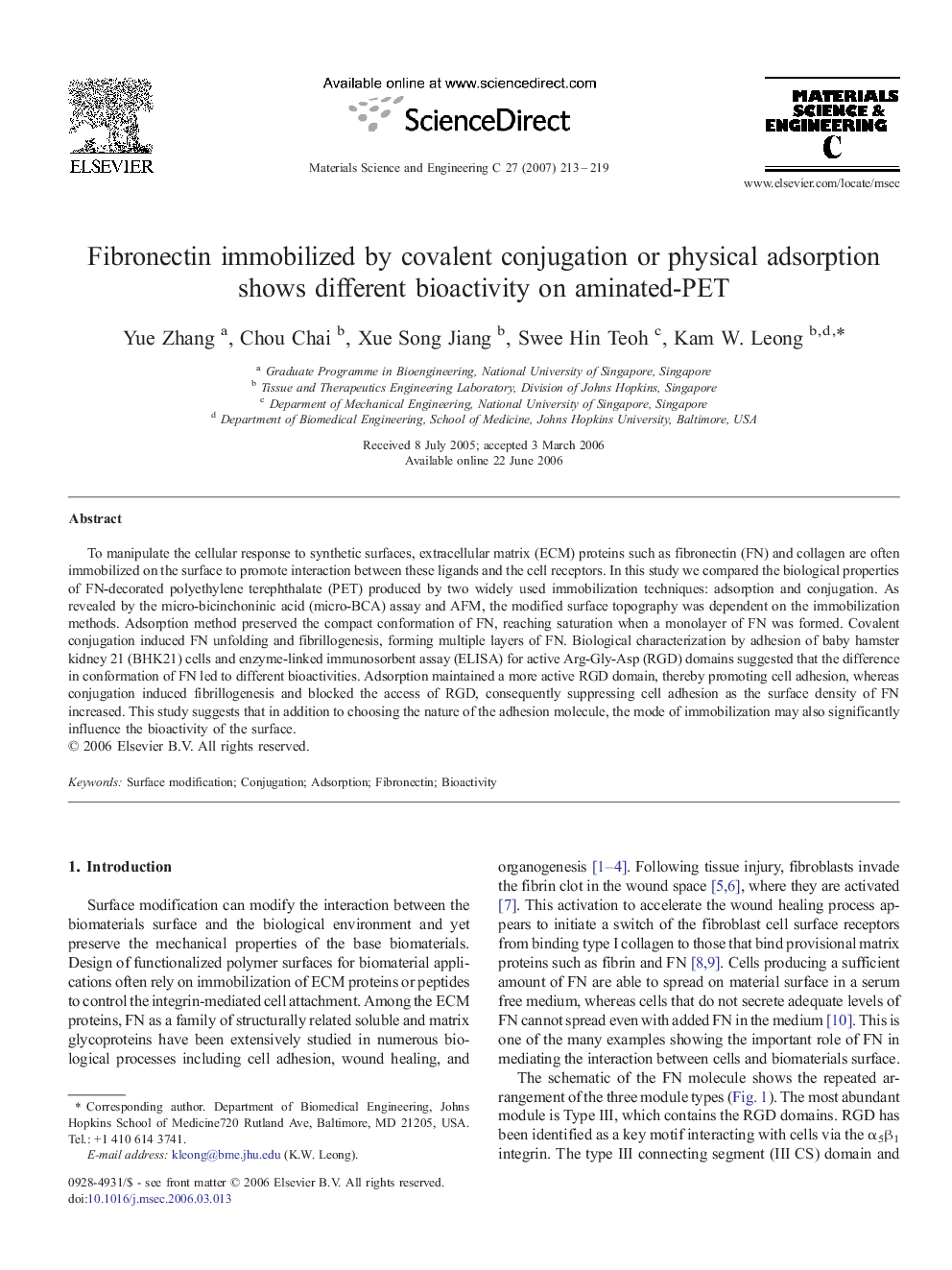| Article ID | Journal | Published Year | Pages | File Type |
|---|---|---|---|---|
| 1431226 | Materials Science and Engineering: C | 2007 | 7 Pages |
To manipulate the cellular response to synthetic surfaces, extracellular matrix (ECM) proteins such as fibronectin (FN) and collagen are often immobilized on the surface to promote interaction between these ligands and the cell receptors. In this study we compared the biological properties of FN-decorated polyethylene terephthalate (PET) produced by two widely used immobilization techniques: adsorption and conjugation. As revealed by the micro-bicinchoninic acid (micro-BCA) assay and AFM, the modified surface topography was dependent on the immobilization methods. Adsorption method preserved the compact conformation of FN, reaching saturation when a monolayer of FN was formed. Covalent conjugation induced FN unfolding and fibrillogenesis, forming multiple layers of FN. Biological characterization by adhesion of baby hamster kidney 21 (BHK21) cells and enzyme-linked immunosorbent assay (ELISA) for active Arg-Gly-Asp (RGD) domains suggested that the difference in conformation of FN led to different bioactivities. Adsorption maintained a more active RGD domain, thereby promoting cell adhesion, whereas conjugation induced fibrillogenesis and blocked the access of RGD, consequently suppressing cell adhesion as the surface density of FN increased. This study suggests that in addition to choosing the nature of the adhesion molecule, the mode of immobilization may also significantly influence the bioactivity of the surface.
